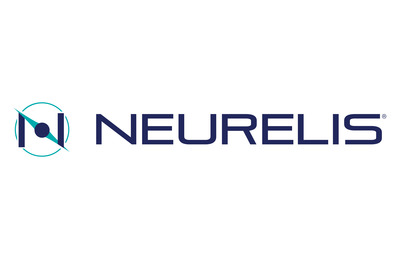NEURELIS WILL HIGHLIGHT ANALYSES OF SEIZURE TREATMENT WITH DIAZEPAM NASAL SPRAY AT THE AMERICAN ACADEMY OF NEUROLOGY ANNUAL MEETING
Presentations include post hoc analyses assessing at home treatment of status epilepticus, acute seizure termination and rapid and early seizure termination, and treatment of prolonged seizures
SAN DIEGO, April 7, 2025 /PRNewswire/ -- Neurelis, Inc., today announced details of three poster presentations at the American Academy of Neurology (AAN) Annual Meeting to be held April 5-9 in person in San Diego and online. The presentations include post hoc analyses of clinical data prospectively collected from studies of diazepam nasal spray as an immediate-use seizure medication for treatment of episodes of frequent seizures. Presentation topics include evaluation of early at home treatment for status epilepticus (SE), acute seizure termination and rapid and early seizure termination, and treatment of prolonged seizures.
"We are pleased to join the neurology community at this year's AAN Annual Meeting to discuss the latest learnings on treatments for people with epilepsy and other neurological disorders," said Adrian L. Rabinowicz, MD, Neurelis Chief Medical Officer. "We look forward to sharing our additional analyses of data from studies of immediate-use seizure medication and joining the dialogue on clinical research that has the potential to meaningfully impact those living with the challenges of epilepsy."
Neurelis' Annual Meeting presentations include the following.
Poster Session 8 – April 8, 8:00 AM-9:00 AM PT:
- Treatment of Status Epilepticus At and After T1 With Diazepam Nasal Spray: A Combined Cohort Analysis
A post hoc analysis of pooled data from two long-term, open-label safety studies was conducted to investigate treatment of early SE episodes in patients with epilepsy aged 2-65 years. Early SE episodes were defined as seizures continuing after Time Point 1 (t1) (5 minutes for generalized seizures; 10 minutes for focal and unclassified seizures). For patients with seizure episodes reaching t1 (671 events of t1 SE in 97 patients), diazepam nasal spray provided timely control of SE episodes. Overall, safety was generally consistent with the established profile of diazepam nasal spray, and most episodes did not result in hospitalization due to serious treatment emergent adverse events (TEAEs) for SE. Additionally, in a responder analysis, the majority of early SE seizures terminated prior to Time Point 2 (when neuronal injury may occur: 30 and 60 minutes for generalized and focal seizures, respectively).
Poster Session 12 – April 9, 11:45 AM-12:45 PM PT:
- Treatment of Prolonged Seizure with Diazepam Nasal Spray: A Post Hoc Cohort Analysis
To assess effectiveness of diazepam nasal spray in treating prolonged seizures (5-15 minutes post onset) within seizure clusters (727 events), a post hoc subgroup analysis of data from the long-term safety study of diazepam nasal spray in patients aged 6-65 years was conducted. Across age, seizure type, and high treatment usage subgroups, generally similar times to seizure termination were observed. Use of second doses within 24 hours for prolonged seizures was low (9.3%) and generally consistent across subgroups, demonstrating preserved first-dose effectiveness in seizures that have become prolonged.
- Exploring Proposed Recommendations for Acute Cluster Treatment and Rapid and Early Seizure Termination Using Data from a Long-Term Safety Study of Diazepam Nasal Spray
Clinical data from the long-term safety study of diazepam nasal spray in patients aged 6-65 years was analyzed to determine whether it could support the recent expert consensus recommendations to terminate acute clusters and ongoing seizures that are expected to be prolonged. The effectiveness of diazepam nasal spray to prevent further seizures in a cluster was demonstrated by the low use of second doses across 24 hours. Rapid and early seizure termination was demonstrated in a dataset of 3225 administrations. Notably, for treatment within 5 minutes of seizure onset, rapid time to seizure termination reinforced the importance of early treatment.
The American Academy of Neurology and its members are focused on promoting brain health by advancing what is possible in brain disease treatment, cures, and prevention. Neurelis' work supports this mission with a dedication to improving quality of life for people with epilepsy and other neurologic disorders.
About Neurelis
Neurelis, Inc., is a neuroscience company focused on the development and commercialization of therapeutics for the treatment of epilepsy and neurologic disorders characterized by high unmet medical need. The FDA has approved Neurelis' VALTOCO® (diazepam nasal spray) as an acute treatment of intermittent, stereotypic episodes of frequent seizure activity (i.e., seizure clusters, acute repetitive seizures) that are distinct from an individual's usual seizure pattern in adult and pediatric patients 6 years of age and older. VALTOCO is a proprietary formulation of diazepam incorporating the science of INTRAVAIL®, a transmucosal absorption enhancement technology that enables the noninvasive delivery of a broad range of protein, peptide, and small-molecule drugs. For more information on VALTOCO, please visit www.valtoco.com. For the latest scientific information on VALTOCO, please visit http://www.neurelismedicalaffairs.com/. Neurelis is also developing NRL-1004, an investigational, Phase 1 stage intranasal olanzapine for treatment of acute agitation episodes associated with schizophrenia and bipolar disorder. In addition, Neurelis is also developing NRL-1049 (previously known as BA-1049), an investigational, Phase 1 new chemical entity Rho kinase (ROCK) inhibitor, for the treatment of cerebral cavernous malformations (CCMS), a rare disorder of the central nervous system (CNS). For more information on Neurelis, please visit www.neurelis.com.
Important Safety Information about VALTOCO:
Indication
VALTOCO® (diazepam nasal spray) is indicated for the acute treatment of intermittent, stereotypic episodes of frequent seizure activity (i.e., seizure clusters, acute repetitive seizures) that are distinct from a patient's usual seizure pattern in patients with epilepsy 6 years of age and older.
WARNING: RISKS FROM CONCOMITANT USE WITH OPIOIDS; ABUSE, MISUSE, AND ADDICTION; and DEPENDENCE AND WITHDRAWAL REACTIONS
|
Contraindications: VALTOCO is contraindicated in patients with:
- Hypersensitivity to diazepam
- Acute narrow-angle glaucoma
Central Nervous System (CNS) Depression
Benzodiazepines, including VALTOCO, may produce CNS depression. Caution patients against engaging in hazardous activities requiring mental alertness, such as operating machinery, driving a motor vehicle, or riding a bicycle, until the effects of the drug, such as drowsiness, have subsided, and as their medical condition permits.
The potential for a synergistic CNS-depressant effect when VALTOCO is used with alcohol or other CNS depressants must be considered, and appropriate recommendations made to the patient and/or care partner.
Suicidal Behavior and Ideation
Antiepileptic drugs (AEDs), including VALTOCO, increase the risk of suicidal ideation and behavior. Patients treated with any AED for any indication should be monitored for the emergence or worsening of depression, suicidal thoughts or behavior, and/or unusual changes in mood or behavior.
Glaucoma
Benzodiazepines, including VALTOCO, can increase intraocular pressure in patients with glaucoma. VALTOCO may only be used in patients with open-angle glaucoma only if they are receiving appropriate therapy. VALTOCO is contraindicated in patients with narrow-angle glaucoma.
Neonatal Sedation and Withdrawal Syndrome
Use of VALTOCO late in pregnancy can result in sedation (respiratory depression, lethargy, hypotonia) and/or withdrawal symptoms (hyperreflexia, irritability, restlessness, tremors, inconsolable crying, and feeding difficulties) in the neonate. Monitor neonates exposed to VALTOCO during pregnancy or labor for signs of sedation and monitor neonates exposed to VALTOCO during pregnancy for signs of withdrawal; manage these neonates accordingly.
Risk of Serious Adverse Reactions in Infants due to Benzyl Alcohol Preservative
VALTOCO is not approved for use in neonates or infants. Serious and fatal adverse reactions, including "gasping syndrome," can occur in neonates and low-birth-weight infants treated with benzyl alcohol–preserved drugs, including VALTOCO. The "gasping syndrome" is characterized by central nervous system depression, metabolic acidosis, and gasping respirations. The minimum amount of benzyl alcohol at which serious adverse reactions may occur is not known.
Adverse Reactions
The most common adverse reactions (at least 4%) were somnolence, headache, and nasal discomfort.
Diazepam, the active ingredient in VALTOCO, is a Schedule IV controlled substance.
To report SUSPECTED ADVERSE REACTIONS, contact Neurelis, Inc. at 1-866-696-3873 or FDA at 1-800-FDA-1088 (www.fda.gov/medwatch).
Please read full Prescribing Information, including Boxed Warning.
Contacts:
Brittany Bradrick, Chief Operating Officer and Chief Financial Officer, +1 858 251 2100
![]() View original content to download multimedia:https://www.prnewswire.com/news-releases/neurelis-will-highlight-analyses-of-seizure-treatment-with-diazepam-nasal-spray-at-the-american-academy-of-neurology-annual-meeting-302421290.html
View original content to download multimedia:https://www.prnewswire.com/news-releases/neurelis-will-highlight-analyses-of-seizure-treatment-with-diazepam-nasal-spray-at-the-american-academy-of-neurology-annual-meeting-302421290.html
SOURCE Neurelis, Inc.


